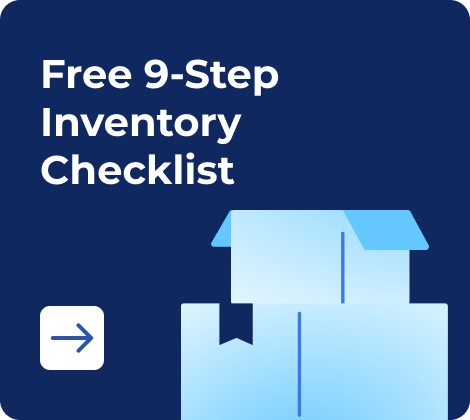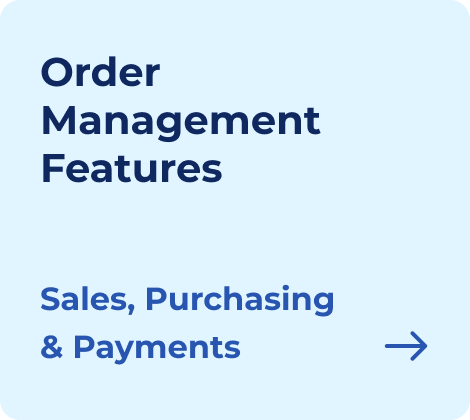Andrey Shaikevich, Head of Developers at am4u.ru, creates technical in-app integrations for Kladana. What is it like to be a developer for SMEs, what are the peculiarities, and how to earn partnership fees on the SaaS market? Read in this case study.
Partnership with Kladana
We have been working with integrations for various small and medium-sized businesses since the early 2000s. Back then, the browser was Internet Explorer. Automation was understood as any solution that could simplify work at the click of a button.
I realized that the development of additional applications was a trend in the IT market. The concept we chose to work with at that time was to create applications with a web interface. That’s why we became partners with Kladana quite quickly — even the first versions of the software were different from all the others.
I had known about Kladana for a long time. So I understood the software profoundly and was capable of naming features that could be improved or expanded. When we started making in-app integrations for Kladana, we pumped up our professional skills — we had to work hard with the API.

Earning Partnership Fees
If you take the average cost of developing an application, for example, for a small cloud-based app, it is no less than $730–830 at cost. A more or less average application costs $3,100–5,200.
How to survive on partnership fees? The cost of Kladana for a user is not very high and you have to sell a lot. However, customers do not buy a bun that they forget about after having eaten it, but rather complex software.
That is why I would recommend partners to increase their level of education. One should take courses related to inventory & production management. To sell Kladana products, one needs to know at least the basics: how stock management & warehousing are organized, what the legal framework is, and so on.
Partners can earn their main income by consulting (telling the client how to use the product), developing custom integrations, and providing training (giving a client some additional value than the technical support Kladana can provide).
The Demand for the New In-App Integrations
Firstly, we actively involve entrepreneurs in working with Kladana. Sometimes, business people say that they like everything about Kladana, but they miss particular features. And this is where the space for our activity begins. By developing a tiny integration (or a large one — it depends on the client’s request), we can multiply the productivity of a certain business.
Secondly, we analyze client requests for new applications. Thirdly, as an architect-analyst, I am constantly working in Kladana and mastering new features. When we do integrations, I can come to the store and see how something works. I can replace the storekeeper or the person who does the paperwork.
Become our Partner and Earn Extra Profit
If you have a similar business to Andrey, and you can develop in-app integrations, automate businesses, and create tailored solutions using the API, you could be interested in our partnership programme.
Reach out to new clients who could use Kladana software, offer your existing clients new opportunities, and earn 20–50% of the subscription price + 100% on additional services
How to Save 70% of a Logistics Expert’s Working Time with Automation
We set up automation for a chain of 25 convenience stores.
Problem
Due to the large-scale stock movement, it was difficult to keep track of the speed of sales and replenish stores with the necessary products on time.
Task
A store needed to have a range of goods in the required quantity on hand. Excess products that were not sold in a particular retail outlet needed to be promptly returned to the central warehouse, because these items could be sold well in another retail outlet.
Solution
We developed an integration that analyzes all retail sales in real-time and keeps a history of them for a year. As a result, the average speed of the sale of items is calculated, and even the days of the week on which a particular product is sold better.
Each outlet can set up specific days when goods are delivered from the central warehouse. One can set the parameters of the store so as not to overfill it with a product range.
The software also automatically distributes the goods to retail outlets directly from Kladana. The logistics expert only has to check the transfer paper created by the software, print it, and give it to those who are responsible for the shipment.
Result
Whereas in the past the analysis phase (what was sold, what was not sold, and at which point of sale) took up to 70% of the logistics expert’s time, now the software does it instead. In addition, it analyzes goods that are kept at a warehouse for too long and are not in demand.
We set a certain number of days when a product is located in a retail outlet. If an item is not sold during this period, it is automatically transferred to the central warehouse. This minimizes the risk of errors, and the speed of sales is accelerated.
According to the statistics, the increase in sales speed in this retail chain is about 15–20%.
How to Minimize Human Error with Automation
Another case story is about handling imported goods.
Problem
Many entrepreneurs are faced with the fact that importers work to order. That is, they collect several hundreds, or maybe even thousands, of orders and carry 3–5 containers with goods. When they arrive, it is very difficult to determine who should be given what.
Solution
We made a tool for Kladana that analyzes supplier orders for linking them to customer orders. The supplier puts the items into boxes, a document called «packing list» is generated, and it can be placed in the software.
Result
At the end of the day, the person who works with this application receives a document showing what goods are in a particular box, where they are being transferred to, and for which customer. This integration also creates labels with barcodes — the receiving of goods becomes dozens of times easier.
In other words, we detect re-sorting and solve the problem of unnecessary stock movement — this is important for those who work under orders.
Containers that used to take a week to receive and sort out are now completely sorted out in 2 days and sent for shipment.
How to Eliminate Routine Operations with Automation
Our client, the UpMarket company, is engaged in fulfillment for sellers of marketplaces. For example, 150 orders come in a day. The entire UpMarket task chain looks like this: find the goods, make no mistakes, change the status of the order, and send it to the marketplace.
Problem
The company had 5 employees, who were able to cope with these tasks quite well. But when the number of orders reached 300 per day, there was a collapse. Managers began to make mistakes and didn’t have enough time to process all the orders. The company director realized that the number of orders passing through the fulfillment can reach 1,500–2,000 and even 5,000 per day. Finding goods in stock when picking an order under such conditions is not the easiest task. Moreover, manual operations such as adding addresses and so on became difficult to handle.
Task
We needed to make it possible for managers to process hundreds of orders in a day without losing the quality of work.
Solution
We have fully automated the inventory management system. The UpMarket warehouse occupies three floors. Products arrive in one location. They are labeled there, get serial numbers, and barcodes are assigned to them. A system is formed which records where the goods arrive — in which storage bins & in which locations of the warehouse.
The order arrives at the data collection terminal to a storekeeper, who, having opened the order, sees where the goods are stored, in which storage bins. A storekeeper collects items and passes them on for verification. The inspector checks the compliance of the set by the barcode. Moreover, the entire order pick-up process is recorded on a video camera.
Result
The warehouse efficiency increased by 300%. After the integration was implemented, the same team of managers was already collecting 900 orders a day.


